

 JAMES HICKMAN looks at this range of products to simplify the operation of accessories.
JAMES HICKMAN looks at this range of products to simplify the operation of accessories.
Cobalt Alpha brings new meaning to accessory control. It allows control of all you accessories on both analogue AND digital layouts from one control panel, with only ONE simple connection to the . There are different ways in which you can use the Cobalt Alpha, and at least one of these ways is suitable for every layout. So what's in the range?
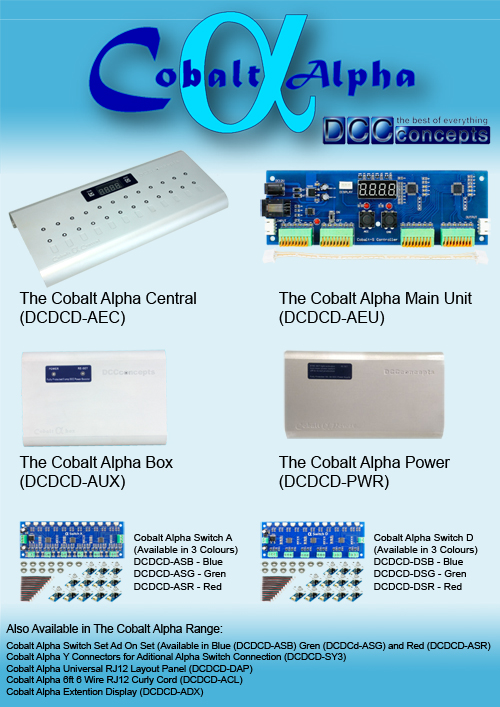
Click image to view larger version.
Although there are a lot of products in the Cobalt Alpha range, no one will need all of them. The full range covers every need and every eventuality.
Unlike many other ways of controlling your accessories, Cobalt Alpha makes wiring your layout as simple as you want it to be. We'll start by looking at how it works as a stand-alone system for both analogue and digital, and then how to integrate it into your digital layout. Before we do that, first lets have a better look at the parts of the system.
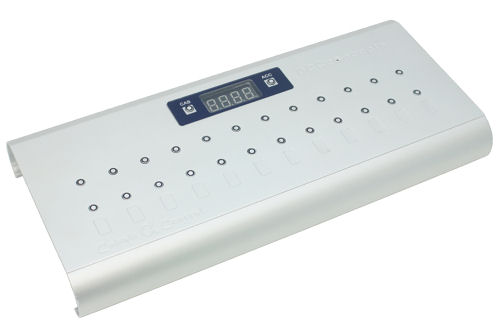
Cobalt Alpha Central Integrated 12 Way Digital Switch
This is the top-end product of the Cobalt Alpha Range. Housed within its sleek and stylish brushed aluminium case lie's a Cobalt Alpha Main Unit and a set of self illuminating switches. The unit can be combined with the Cobalt Alpha Box and the Cobalt Alpha Power to create a separate bus round ANY layout allowing you control of all your accessories with ease. The Alpha Central even comes with stainless steel switch labels to help you keep an eye on which points you are switching.
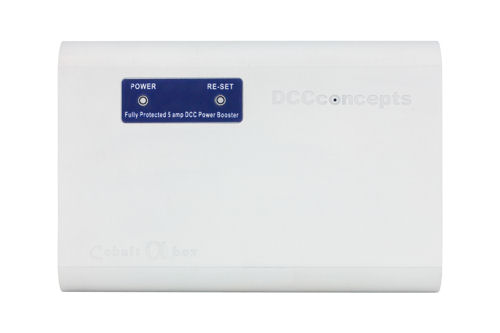
Cobalt Alpha Box Unit
This is the brains of the system. It converts the signals from the Cobalt Alpha Central, Cobalt Alpha Main Unit, or both, into a command signal that is sent through the accessory bus. This signal then simply tells which accessory to activate. Like the Cobalt Alpha Central this unit is manufactured in the same stylish brushed aluminium case and will happily sit alongside it.
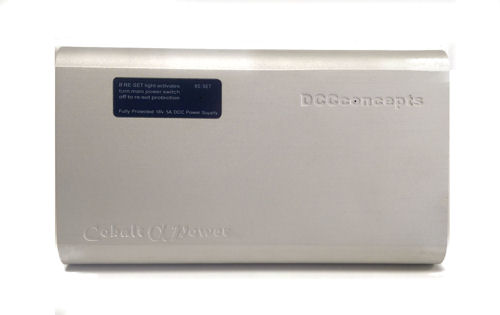
Cobalt Alpha Power 5 amp DC/DCC Power Supply
As the name suggests, this is the power supply for Cobalt Alpha. Packed with a 5 amp output this power supply will happily power all of the accessories on your layout. As with the previous two units, Cobalt Alpha Power is also produced with the same finish. With simple wiring and their good looks, an impressive control area will be yours in no time.

If you prefer a layout schematic as a control panel rather than one console, Cobalt Alpha offers that too! By using the Alpha switches you can either connect directly to your DCC Concepts point motors (and others by including a decoder in the process, this is described later in the article) or via the Cobalt Alpha Box and have control over your accessories from individual switches. These can then be mounted as you wish into a control panel of your own design.
The Cobalt Alpha Switch Set A is designed to work with DCC Concepts Slow Action Cobalt IP Analogue Motors.
The Cobalt Alpha Switch Set D is designed to operate both DCC Concepts Slow Action Cobalt IP Digital Motors, as well as any other style of point motor as long as it is connected to an accessory decoder. Analogue users need not be scared of this either as the connections to the decoder are easier than wiring up a motor to a Capacitor Discharge Unit!
As you have read, the Cobalt Alpha system is very versatile, so let's have a look at some of the more common methods.
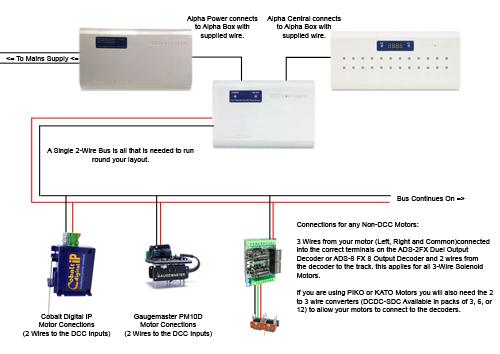
Click image to view larger version.
The simplest way to use the Cobalt Alpha system is to use the Cobalt Alpha Central. This is connected to the Alpha Box and the Alpha Power.
As previously mentioned there is a couple of ways to achieve this:
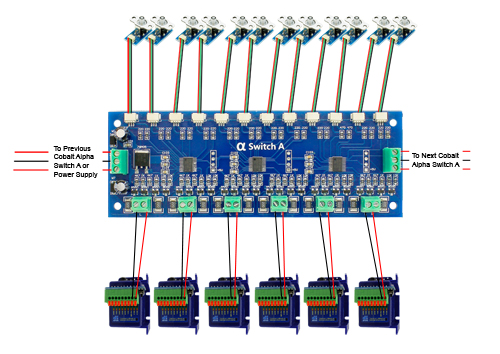
Click image to view larger version.
If you are using the DCC Concepts Cobalt IP Analogue motors simply wire them us as above.
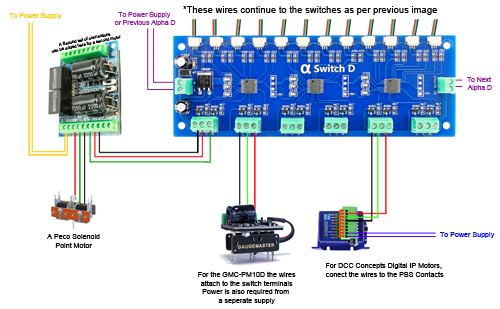
Click image to view larger version.
If you are using other manufacturers of motors with the DCC Concepts accessory decoders, wire them up as above.
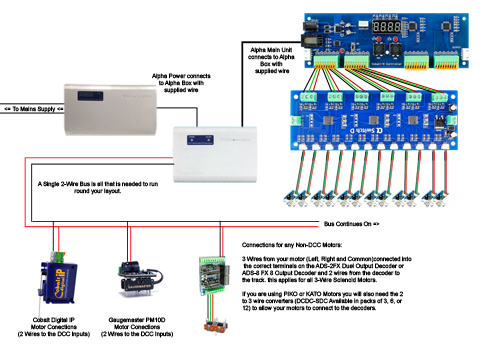
Click image to view larger version.
Both the Cobalt Alpha Switch A and Cobalt Alpha Switch D (as required) can be added to a panel. Details on how to make one can be found in the instructions provided (or see my Building a Mimic Panel article for tips). Both modules can also be integrated with the Alpha Main unit to give two wire control of all your accessories, in the same way the Cobalt Alpha Central can.
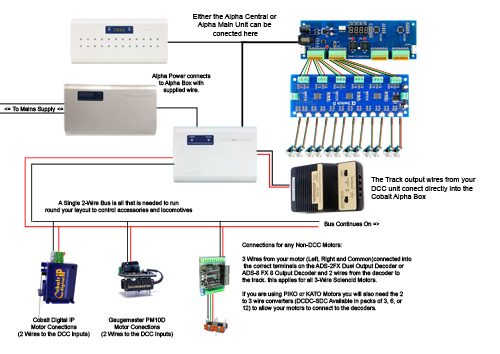
Click image to view larger version.
Not only can the Cobalt Alpha System be used as a stand-alone system, it can also be integrated with your DCC Controllers.
Once your system is integrated to the Cobalt Alpha system you are ready to go. You can now control all your accessories from the Cobalt Alpha System AND your DCC Controller (providing your controller has the ability to control accessory functions!).
And there's more... Once your system is connected as above, the Cobalt Alpha System also boosts your power. As connected the system will boost any power from your digital system to a total of 5 Amps, more than enough for even the modest of layouts.
Well that brings us to the end of this article on the DCC Concepts Cobalt Alpha range. Although covering a lot of what the system can do, this is in fact only a brief introduction to what it offers. The system can even do more with the addition of some of the accessories in the range. I hope to look more in depth at the topics in future articles, but for now if you would like further information visit our Downloads page, where you will find instruction manuals on all the units.
On a side note, some of you may have noticed there was no mention of the new Cobalt Alpha Mimic within this article. This will be given its own dedicated article in the coming issues.